
Making sure your lettuce is properly spaced with enough room to grow is very important. The challenge is that lettuce seeds are tiny and most of us end up sprinkling the lightweight seeds in the row. The result: overcrowded lettuce.
There are many different kinds of lettuce, from iceberg (head lettuce) to romaine, loose leaf, and even baby lettuce, and each one grows best with a particular spacing. As a general rule, plant or thin your lettuce heads 20cm to 25cm (8-10 inches) apart so they will not be crowded when they reach their mature size.
Properly spaced lettuce will be far superior to lettuce that is crowded together. Keep reading to learn why its so important to space lettuce properly, and how far apart to plant each head.
Effect of Plant Spacing on Growth and Yield of Lettuce
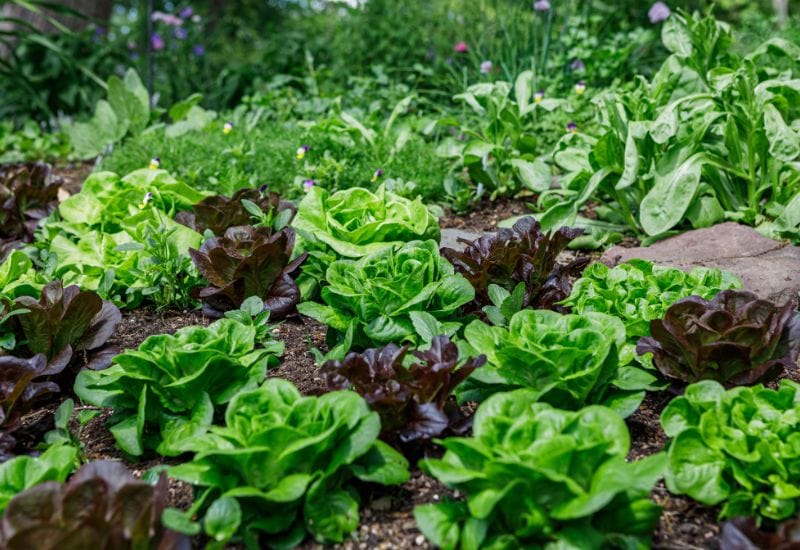
A densely planted lettuce row might look impressive, but you will be disappointed when you harvest a head for supper. When lettuce is planted too close together, the heads will grow as a thick, bitter stalk sporting spindly leaves.
Proper spacing for lettuce (and many other salad greens) is very important if you want large, hearty heads of lettuce. When you give lettuce enough space to grow, you will be rewarded with:
Ideal Spacing For Different Lettuce Varieties
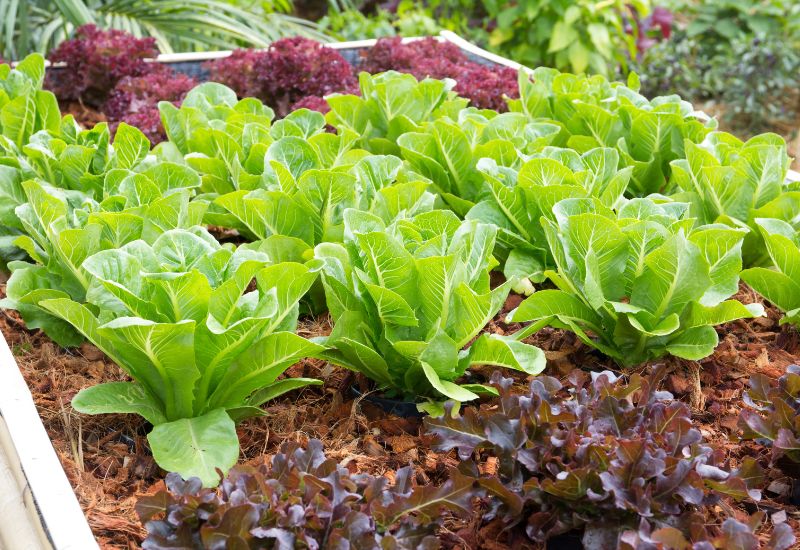
As a basic guideline, lettuce should be spaced 20cm to 25cm (8-10 inches) apart. However, this spacing can vary depending on the variety you are growing:
Of course, these are only guidelines. There are countless varieties of lettuce available, and each one grows slightly differently. For example, some looseleaf lettuce grows tall and tight, while others will splay open their leaves. Also, many people consider romaine to be a heading lettuce, but we have differentiated them here due to the tall, erect nature of the romaine.
How Far Apart Should You Plant Lettuce Seeds?
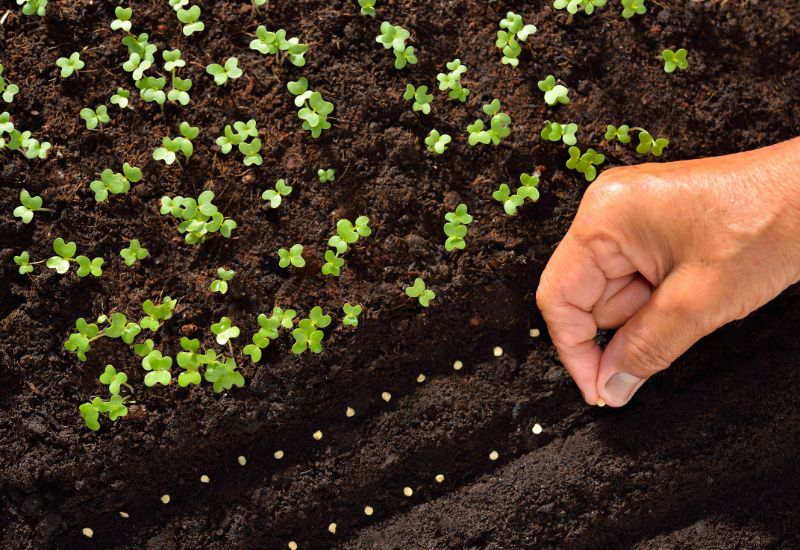
As with everything in the garden, a successful crop starts with properly sown seeds. Lettuce seeds can be very difficult to handle as they are very small and light, making it very difficult to plant one seed at a time.
When planting lettuce in our garden, we take a small pinch of seeds between two fingers, and lightly sprinkle them into the row in the prepared seed bed.
Try and aim for about one seed every inch (2.5cm). In some spots, the seeds might be more densely sown while a little sparce in others, but an average of about 12 seeds per foot (30cm) works well.
This is, however, way to close together for the heads to mature (even for baby lettuce). As your plants grow, thin your lettuce to achieve the ideal spacing.
Thinning Lettuce
Thinning is the practice of sowing seeds more densely than they need to be, and then removing some of them after germination.
When I started gardening, I thought that thinning was the most ridiculous practice: planting extra seeds just so I can pull them out. And while I still think thinning is done to excess in many crops, lettuce is one where thinning works very well.
Since lettuce seeds are difficult to handle, it is too time consuming and tedious to fight with the finicky seeds. It is much more economical to plant thick and then thin afterward. Also, you can eat any of the lettuce you thin out as tender baby leaves.
Do You Have To Thin Lettuce Seedlings?
No, of course you do not have to thin your lettuce. You can sow the seeds further apart and then you won’t need to thin them. Remember, however, that most lettuce has a germination rate of about 70%, and since all the seeds you plant won’t germinate, you want to make sure to compensate for this.
The tricky part of spacing lettuce at sowing time is handling the seeds. Here are some tips to make this job easier:
Buy Pelleted Seeds: These are lettuce seeds that have been coated in clay. They look like little balls and they are quite easy to place them exactly where you want them to grow. Remember that pelleted seeds need more watering than uncoated seeds otherwise the clay sucks the moisture out of the seeds. They also need to be planted slightly deeper than normal.
Seed Tapes: Seed tapes are thin strips of paper that have the seeds attached. Simply roll the tape out in your prepared row, cover with soil, and the paper will decompose as the plant grows. Bear in mind that many lettuce seed tapes will be fairly close together and might still require thinning.
Use A Toothpick: If you have time and patience, you can pick up one seed at a time with a toothpick. Moisten the end of the toothpick in water, then touch it to a seed, and you can plant the seed wherever you want. This is a common practice when planting in containers, and would be far too time consuming for a large garden.
When To Thin
Many people suggest thinning out your lettuce is between 2cm to 3cm (1 inch) tall, but I prefer to wait until they are a bit taller and there is more eating. Make sure you don’t wait too long, however, because once they turn leggy they won’t grow back.
How to Easily Thin Out Lettuce Seedlings
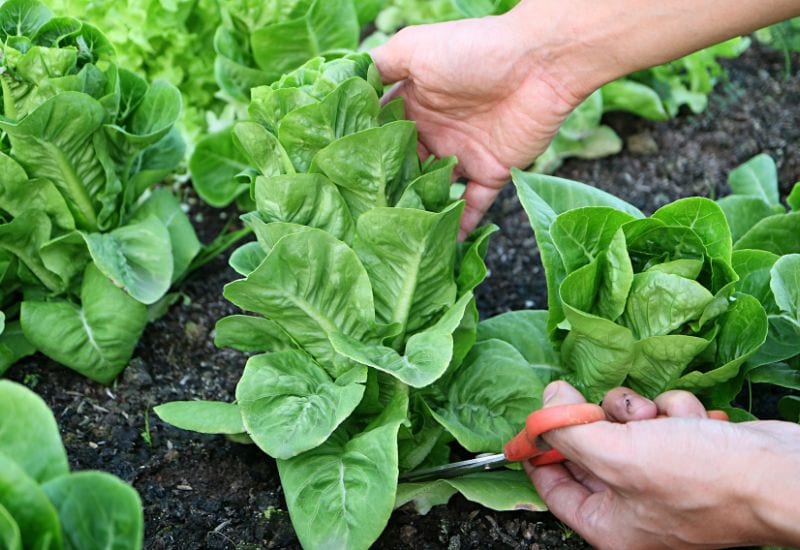
If your lettuce is really small and close together, snipping is the best option as it causes the least disturbance to neighbouring plants. Use a pair of scissors or small pruners and snip the lettuce off close to the ground.
You can also pull the lettuce, but do so carefully as the close-grown plants will entwine their roots, and pulling one may ripe out more than you bargained for. When pulling small lettuce, firmly press your fingers down near the base of the plant prior to pulling as this will help minimize disturbance.
Distance Between Lettuce Rows
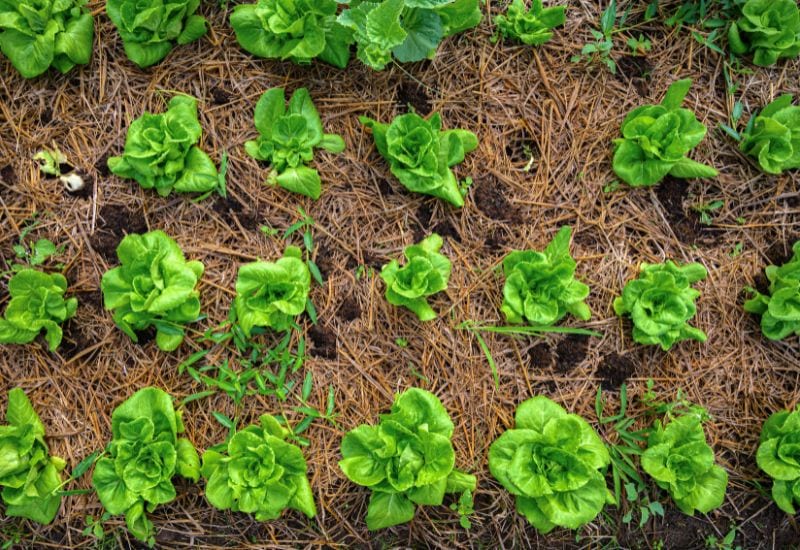
The distance between each row of lettuce is just as important as the space between each plant. Growing multiple rows is particularly important with lettuce, as it allows you to succession plant in short, multiple rows.
Of course, you can make the rows as wide as you want, but too narrow and the plants will be crowded and you won’t be able to walk, and too wide and you are wasting space by growing empty paths.
On average, aim for a path width between 25cm to 45cm(10-18 inches)
The distance between your rows will vary greatly depending on your garden layout. The biggest determining factor is whether you need to walk between your rows, though the equipment you use will make a difference.
We find that about 30cm (12 inches) is an ideal width for the lettuce in our garden, as it allows us to walk between the rows while maximizing the growing capacity of the plot. Depending on your garden plant, and whether you walk between rows or not.
Lettuce Planting Spacing for Other Growing Systems
Many of us plant our gardens in nice, long rows. This has always been my preferred method of planting, but I am starting to realize the benefits of other growing systems, and how these can have a positive impact on our gardens.
Here are some guidelines for how far apart to plant lettuce in different growing methods:
1: Spacing Lettuce In Containers
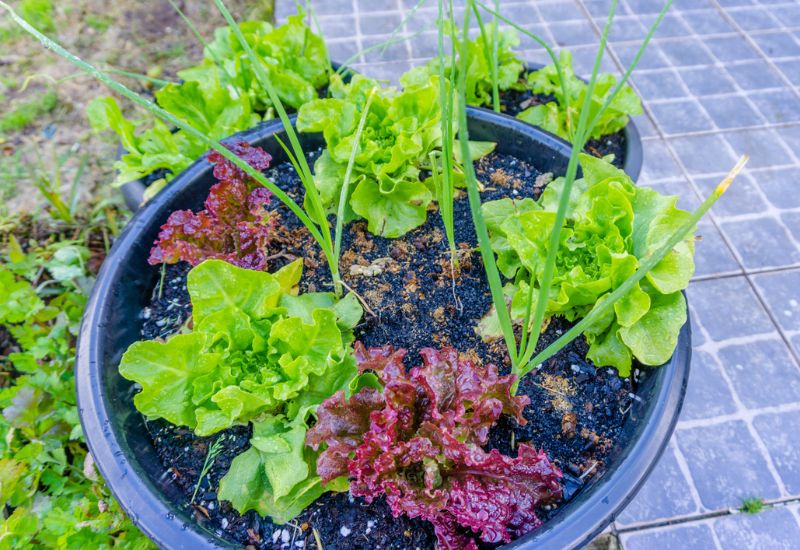
Lettuce are great for containers because their shallow root system does not require deep soil. You can generally plant lettuce closer in pots than in the ground, because there will only be a few plants in each container, you can generally plant lettuce closer in pots than you would in the ground.
As a rough guideline, you can grow 1 to 3 heads of lettuce in an 45cm (18 inch) diameter pot, which is roughly equivalent to a 15 gallon pot.
Make sure to water your container lettuce frequently, as potted soil dries out very quickly.
2: Square-Foot Gardening
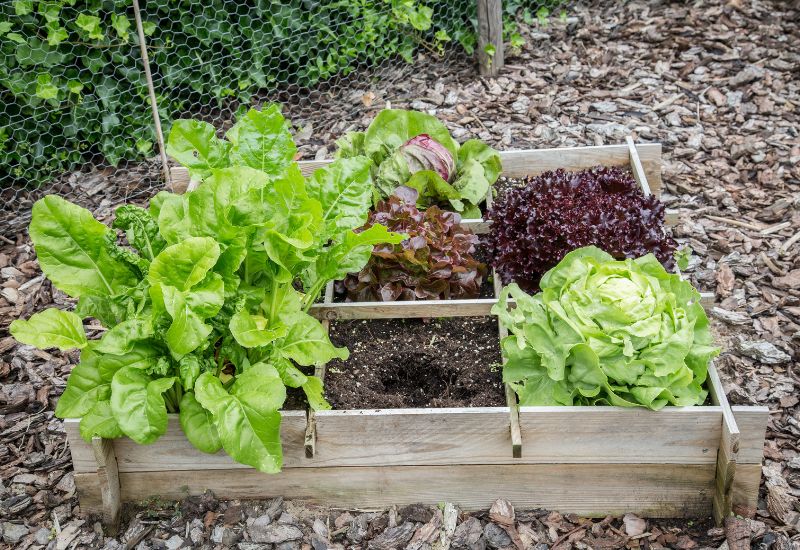
Instead of growing lettuce in rows, why not give square-foot gardening a try? This is the idea of dividing your garden into small squares and planting your vegetables in a grid.
In square-foot gardening, you still want to ensure that your lettuce has enough space. While a single square foot might contain 30 carrot seeds, you should only plant 4 leaf lettuce and 1 head lettuce per square foot. This will give you a spacing of 6 inches and 12 inches between the plants, respectively.
3: Coleman Set Up
Elliot Coleman has really great ideas for any garden, and his row spacing is quite unique as well. Rather than spacing each row of lettuce the same distance apart, he suggests 3 closely spaced rows bordered by a wider walking path.
For cultivating lettuce, Coleman generally suggests a 42 inch strip that contains a 12 inch path and 3 rows of lettuce in the remaining 30 inches.
Check out this video for a visual of Elliot Coleman’s growing method.
4: Raised bed
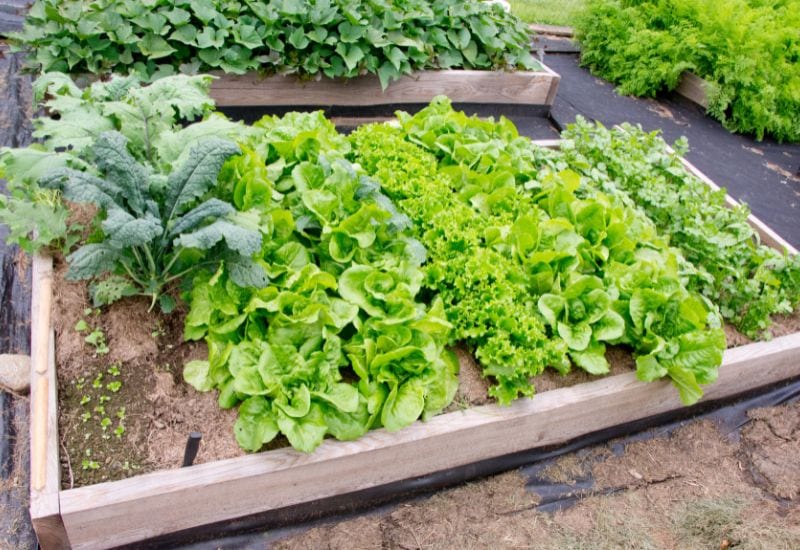
When growing lettuce in a raised bed, the plant spacing is generally the same as in garden. With raised beds, however, you can usually place the rows closer together since you won’t need to walk between them, and weeding is easier.
Remember: don’t put the rows closer than you space the individual heads themselves.
Inching Toward Lettuce Success
Lettuce is easy to grow and very rewarding. After all, nothing says “summer” like a fresh, home-grown salad. By ensuring the best distance between your lettuce plants, you can be sure to make the most of your harvest and yield healthy, delicious greens all summer long (and even in the winter with a few containers).

Written By
Amber Noyes
Amber Noyes was born and raised in a suburban California town, San Mateo. She holds a master’s degree in horticulture from the University of California as well as a BS in Biology from the University of San Francisco. With experience working on an organic farm, water conservation research, farmers’ markets, and plant nursery, she understands what makes plants thrive and how we can better understand the connection between microclimate and plant health. When she’s not on the land, Amber loves informing people of new ideas/things related to gardening, especially organic gardening, houseplants, and growing plants in a small space.
